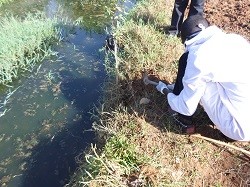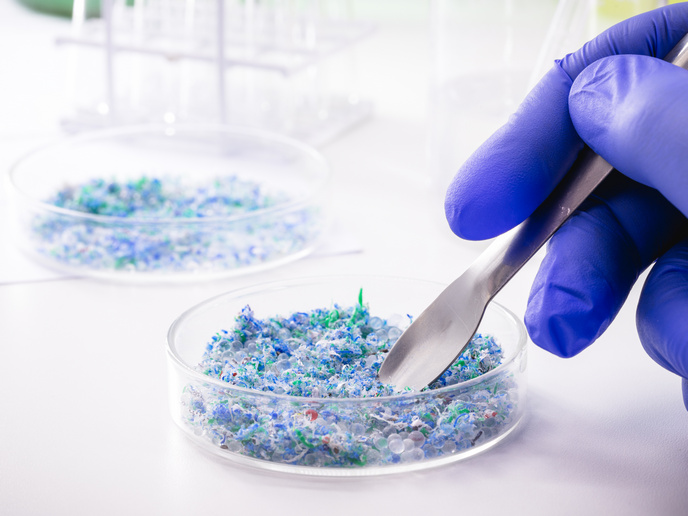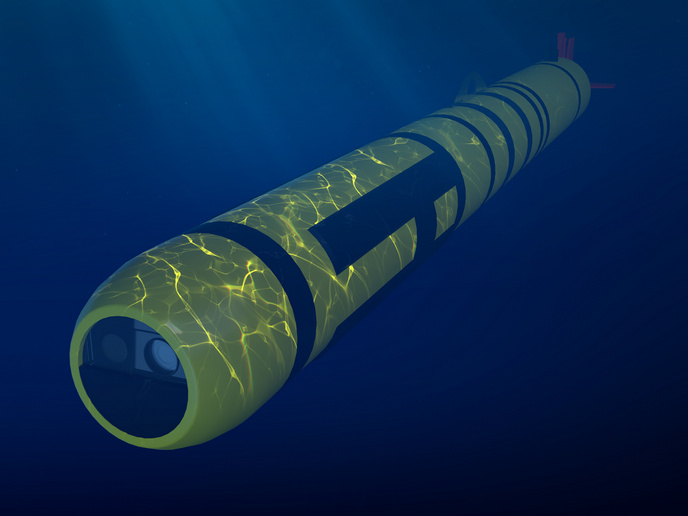Making contaminated waste water safe for irrigation purposes
In water-stressed countries, decision makers are looking at ways to recycle and reuse waste water. In urban India, it is becoming increasingly common practice to treat municipal waste water and reuse it to irrigate food crops. “The problem is that this practice is largely unregulated,” says Kevin McGuigan, a professor of Medical Physics at the Royal College of Surgeons in Ireland(opens in new window) and coordinator of the European partners in the PANI WATER(opens in new window) project. “The presence of some emerging contaminants (ECs) in treated waste waters, including antibiotic-resistant bacteria and genes, poses an unnecessary risk of bioaccumulation in food crops, which eventually are ingested by humans.” With the support of PANI WATER, McGuigan, together with Rita Dhodapkar, are leading an international effort(opens in new window) to develop and deploy new technologies capable of producing safe irrigation water out of contaminated water sources. Dhodapkar, a senior researcher with India’s CSIR-National Environmental Engineering Research Institute(opens in new window), served as the project coordinator for the partners based in India.
New waste water treatment technologies
Researchers began by examining the current state of play of waste water treatment in India. They created a database on ECs, such as pharmaceuticals and hormone disruptors, that had been observed in treated municipal waste waters within the project. “Our goal was to identify the gaps in the available technologies for treating these ECs in waste water,” explains Dhodapkar. With this database in hand, the project then developed three technologies aimed at filling the identified waste water treatment gaps. Among them was a pilot-scale multifunctional reactor capable of treating 50 000 litres per day. Researchers also developed a lab-scale solar-driven device for removing organic matter, microorganisms and contaminants of emerging concern (CECs), such as antibiotic-resistant bacteria, from waste water at the point it enters the main sewer. The prototype can treat up to 100 litres per day. Last but not least, the project created an ultraviolet C (UVC)-driven advanced oxidation treatment process. The pilot-scale plant uses peroxidants as a means of treating as much as 10 000 litres of waste water a day. While the project’s focus was on waste water treatment, it also developed and deployed new technologies for treating drinking water. These include combined activated carbon filtration and UVC-LED technologies for microbial remediation, along with electrocoagulation technologies for removing arsenic, fluoride, iron and faecal bacteria.
Demonstrating how the technology works
Working hand-in-hand, EU researchers and their Indian partners successfully validated these waste water treatment technologies during a number of pilots(opens in new window) that were implemented across India. The pilots aimed to demonstrate how the technologies could be used to remove CECs, including antibiotic-resistant bacteria, along with other chemicals, toxins and pollutants. Both Dhodapkar and McGuigan agree that these pilots represent an important step towards making waste water safe for agricultural use. “This was the first field study of this scale to target the safe reuse of waste water for agriculture – a direct result of the dedication of our international network of interdisciplinary researchers,” they say. With these results in hand, the project’s EU and Indian partners are now working on a policy brief on reusing treated waste water for irrigation purposes.







